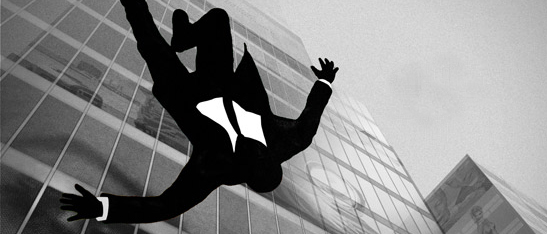This month we have another guest post from an angry advertising creative. He’s a Cannes Lion winning copywriter who has worked for Saatchi & Saatchi, Y&R, TBWA, Leo Burnett and Ogilvy. As you’ll surmise from the guest post, he’s a very angry ad man.
I don’t agree with everything in the post but I’ve decided to publish it as a coherent whole. It’s refreshing to hear an honest account of how advertising really gets made. This episode is particularly close to my heart because it’s about strategists…
Bloody Poodles: The angry ad man on planners and strategists
My first comment on planners is that I’m not qualified to comment on them, because I’ve never really seen the output of their work. But I’m also pretty sure that no one else has either, so I’m as well placed as anyone. The so-called outputs of planners are usually documents with important sounding titles like manifesto, brand architecture or tone of voice. I haven’t seen nearly as many of these documents as you’d think given the recent cambrian explosion of strategists, planners, researchers and other non-creative employees in most agencies.
When creatives do get to see the output of planners, it’s usually at a client meeting. The nice venn diagrams are usually there to soften up the client so that they’ll accept my creative ideas more readily. It feels a bit like the ariel bombardment the night before I go ‘over the top’ and into battle. It’s nice to have, but I’m not sure that once the sh*t hits the fan, that it makes any difference. Although, I once presented my ideas after a Strategy Director had woven the client such a vivid story about their target customer that I’m pretty sure I could have presented an actual piece of crap and it would have been approved. So maybe strategy can be useful if done well.
Even at its best, strategy feels like Suiting 2.0 to me. It’s all the customer insights, creative brief writing and copy suggestions that I’ve always gotten from account managers. Only now I can get from them someone wearing a velvet jacket who secretly wishes that they worked for McKinsey. This new and improved suit isn’t always a bad thing, as the quality of client servicing in most agencies does leave room for a more intellectually robust approach. I’ve been pissed off at plenty of planners but I’ve never felt that they were fundamentally too dumb to understand the big idea. I can’t say the same for account men.
The future of agency life is probably to learn better from each other. For example, I always look at a new brief by asking: Who are we targeting? What do we want to say to them and what do we want them to do as a result? Apparently, this is pretty much what a planner does, so maybe we could swap notes. Although, strategists seem to treat these type of questions as an end unto themselves, rather than a means to an end. As depressing as it sounds, the goal of advertising isn’t always to sell more products. Sometimes it’s just to get the work out the door. I’m thinking in particular of a set of banner ads that took up 3 months of my life and involved well over 40 rounds of changes.
I do have to say that an arrogant planner is a truly dangerous thing. To me, the purpose of planning is to align the thinking of the client and the agency. If the planner is arrogant they might not be able to shift the thinking of the client and they certainly won’t be able to shift thinking inside the agency. Arrogance almost defies the purpose of planning and strategy. If the strategist isn’t a team player, then I can spend half the project reverse engineering a target market just so I’ve got something to base my campaign on. I then get to the meeting and find that the planner has been off in their own world duplicating the effort to create exactly the same thing. This wastes my time and theirs.
Maybe planners really are the brains of the operation, but only at the start of a project. Like someone who farts in an elevator… By the time you see the impact of a planner’s work, they’re long gone.
My friend Peter Thomson (the usual author of this blog) once told me that being a strategist feels like using words to reach out inside a client’s brain and do a particular type of neurosurgery that plants a seeds and makes the client say (in six month’s time), when the work is presented, “Yes, that feels like us.”
– This guest post is part two of a series by the Angry Ad Man. You can read part one at Confessions of an Angry Ad Man Part 1


Interesting to hear a Creative’s take on what they want from a strategist.